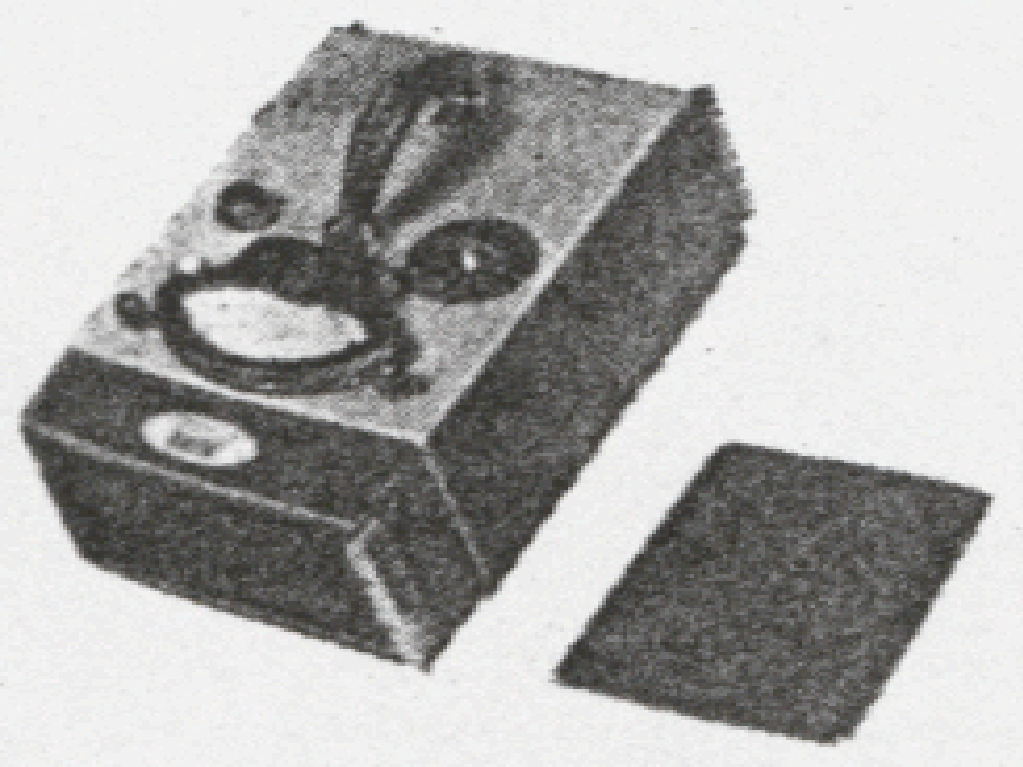
Beckman Instruments
Beckman Instruments dates back to 1944 when they worked with the Hanford Instrument Development Section on the development of the Beckman Portable Survey Meter. Beckman Instruments was located at 11 West State Street in Pasedena, CA in early 1949. The company was owned by Dr. Arnold O. Beckman from the National Technical Laboratories. Later in 1949, the National Technical Laboratory was acquired by Beckman Instruments. It originally produced dosimeter products. At the same time, Berkeley Scientific Company was located nearby at Sixth and Nevin Avenue in Richmond, CA. The company advertised they were “Manufacturers of Scientific and Industrial Instruments”. They produced a variety of nuclear related electronic components. In 1955, the two companies later merged and began producing Geiger counters at the Berkeley Scientific Division of Beckman Instruments located at 2200 Wright Avenue in Richmond, California. In 1955, Beckman acquired Spinco (Specialized Instruments Company).
The Beckman Portable Survey Meter Model MX is a health survey instrument for beta and gamma radiation. It was available in 1944 and used at Hanford Engineer Works. The front side of the meter had a 6-3/8” x 9” sheet celluloid window for beta measurements. The cylindrical chamber volume was 2.25 liters and measured 5" dia x 7" high. It had four ranges of 20, 80, 400 and 2,000 mR/h. It had a leather handle. It used one 7.5, two 22.5, one 45 and one 67.5 volt batteries. The 67.5 volt battery supplied voltage for the ionization chamber. To operate the unit, the right switch was turned to “Wait” which then warmed up the filaments for 20 seconds before use. It had two control knobs – a range selector switch and a zero setting. Inside the unit is a drying agent which needs to be changed every three months. It measured 12” long x 12” high x 6.75” wide and weighed 20 lbs. It had a leather handle.
Need photo
Beckman Portable Survey Meter Model MX 1944
As early as 1944, the Beckman-Molloy portable ionization chamber was available for beta and gamma measurements. It was a bulky, heavy instrument, with dimensions of 4” x 12” x 12” and weighed 15 lbs. It had a 4” diameter upright cylindrical ion chamber mounted on the front of the instrument. The chamber had a thin plastic window with a rotating shield. The shield was open to admit beta and gamma and closed to admit only gamma. It had three ranges 20, 200 and 2,000 mR/h.
Need photo
Beckman-Molloy Ionization Chamber 1944
The Beckman Model MX-2 (of the National Technical Laboratories) was a beta gamma survey meter with an ion chamber and introduced in 1947. It had self-checking for amplifier sensitivity and battery condition. It had direct reading in microamperes and required no calibration. The ionization chamber is 0.82 liters and operated at 90 volts. The interior of the chamber is coated with graphite and has an aluminum collectrode coated with graphite. It is make of bakelite and has a celluloid window and a removable bakelite shield. It could measure between 1 and 2,000 mR/h. It had a conversion chart to convert from microamperes to mR/h and had only one control besides range switch. The case is fabricated from aluminum sheet and has a smooth finish for easy decontamination. It was 7.5” x 6.5” x 12.5” and weighed 12.5 lbs. It was similar in size and design of the Met Lab Zeus and was sometimes referred to it as such. It had five ranges from 20, 50, 200, 500, and 2,000 mR/h. It sold for $300 in 1948 and $265 in 1950.

Beckman Model MX-2 1949
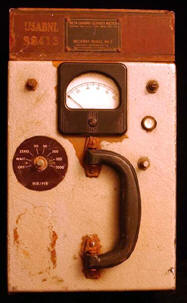
Beckman Model MX-2 late 1940's
The 1952 Model MX-2 has ranges of 20, 50, 200, 1000 and 2000 mR/h.
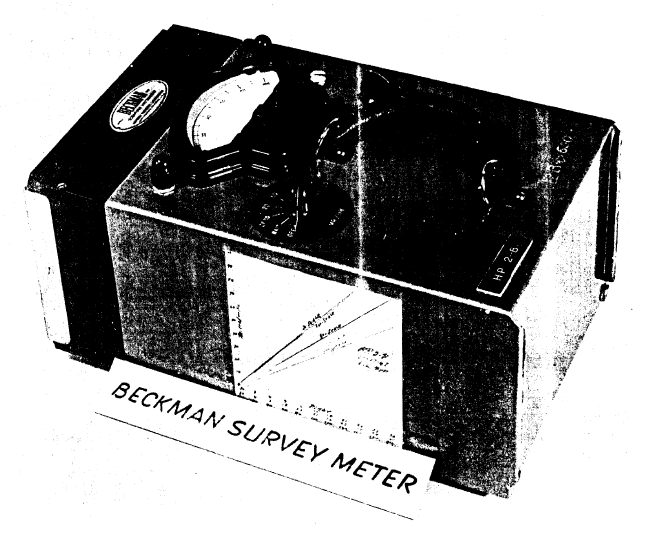
Beckman Beta and Gamma Survey Meter Model MX-2 1952
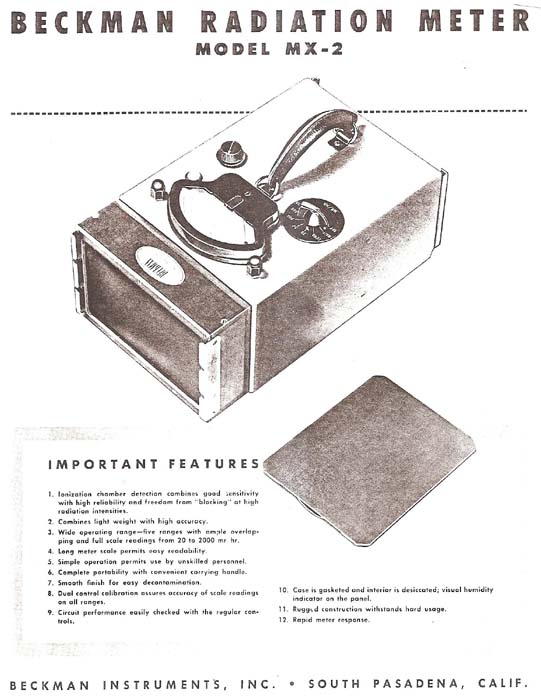
Beckman Model MX-2 Ad 1950
The Beckman Model MX-3 and MX-3A was an ion chamber ratemeter-accumulator for beta gamma monitoring. The unit had applications in personnel protection for monitoring radiological laboratories, medical and dental offices, and hospitals. It has a 1.6 liter ionization chamber operating at 105 volts. It operated on inexpensive AC power. Scale was 20, 200, and 2,000 mR/h and can be used as an accumulator up to 100 mR. A recorder could be attached and could also be used with external probe or alarming system. The unit has a cast aluminum case with smooth grey hammertone finish. The ionization chamber is made of bakelite and has a replaceable celluloid window. It had features similar to the MX-2. It sold for $350 in 1948 and the MX-3 for $310 in 1950.
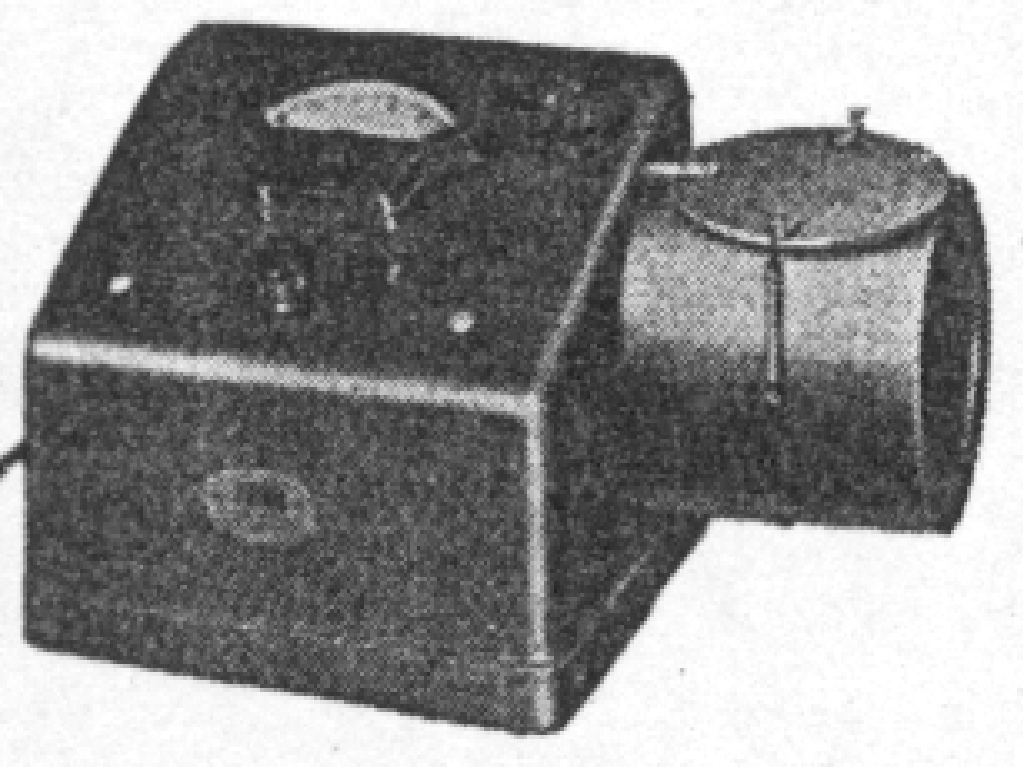
Beckman Model MX-3A 1948
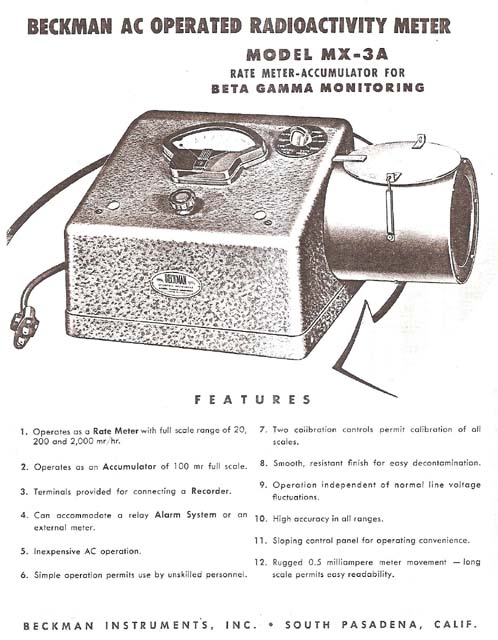
Beckman Model MX-3A Ad 1950
The Beckman Model MX-4 Radioactivity Meter was a universal laboratory ionization meter. Operating range was 1-20,000 mR/h in 14 overlapping steps. It had interchangeable ionization chambers on a six-foot cable to minimize secondary radiation effects. The chamber could be attached to a standard ring stand support. It has a 1.6-liter ionization chamber operating at 300 volts. The unit was battery operated. The unit is 9.5” x 10.5” x 12.5” and weighs 26 lbs. The case is made of laminated walnut and the panel is engraved aluminum. The unit sold for $650 in 1948 and $585 in 1950.
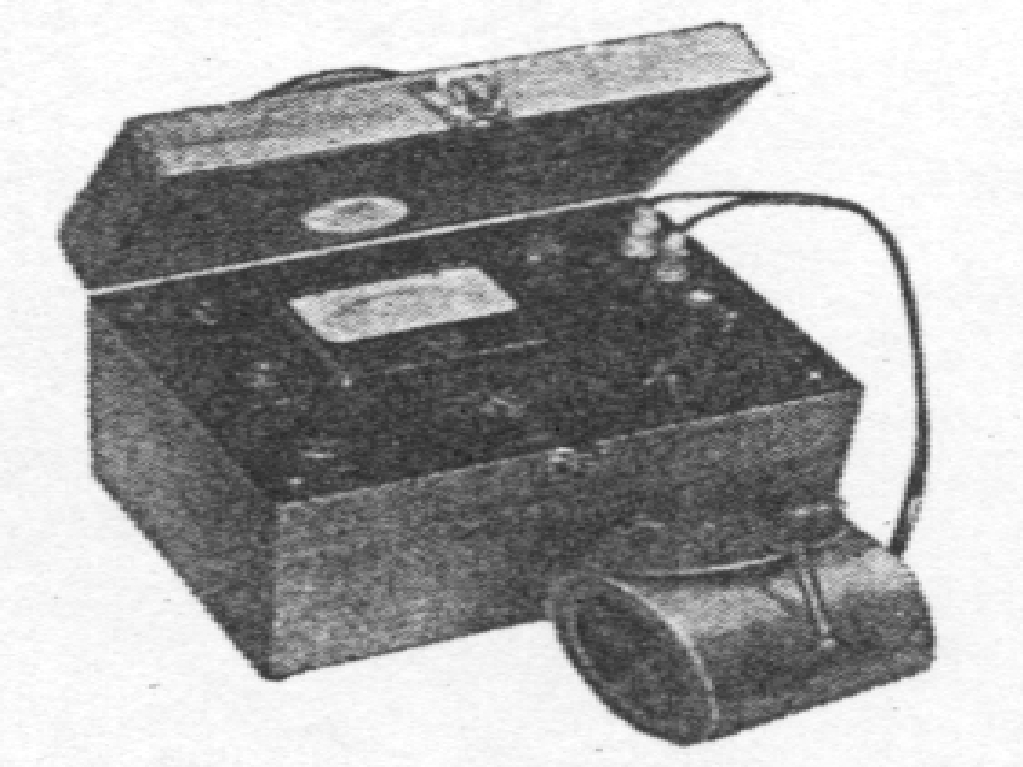
Beckman Model MX-4 1948
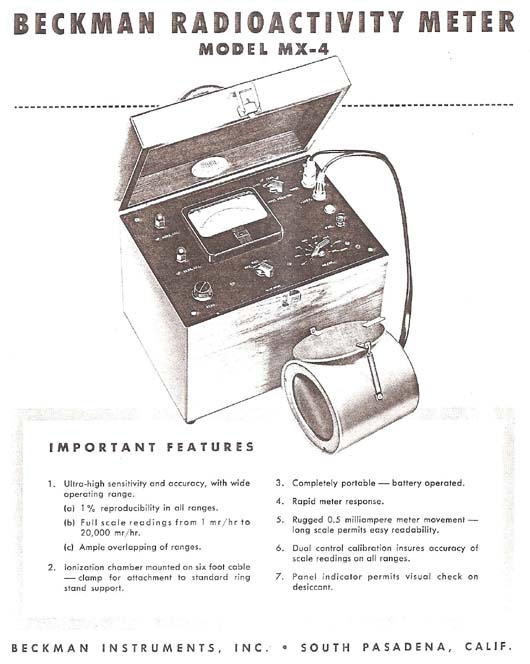
Beckman Model MX-4 Ad 1950
The Beckman Model MX-5 (also sold by Radiation Counter Laboratories as the Beckman Survey Meter, Mark II, Model 20) is a portable GM rate meter to detect and measure x-rays, beta and gamma radiation in 1948. It is battery operated and has a self-quenching GM tube mounted on a 3’ probe. The probe was 1” x 8” and had a 1/32" sliding brass shield. The probe operated at 300 volts and had 3 ranges from 0.2 to 20 mR/h. The circuit is claimed to eliminate zero control and to feature a rapid meter response. It was completely waterproof and humidity-proof and weighed 9 lbs. The unit measures 4-5/8” x 5.25” x 9.25”. Cost was $250 in 1948 and $200 in 1950. The case was sturdy aluminum and came in a smooth grey, hammertone finish and the probe finish was chromium plate.
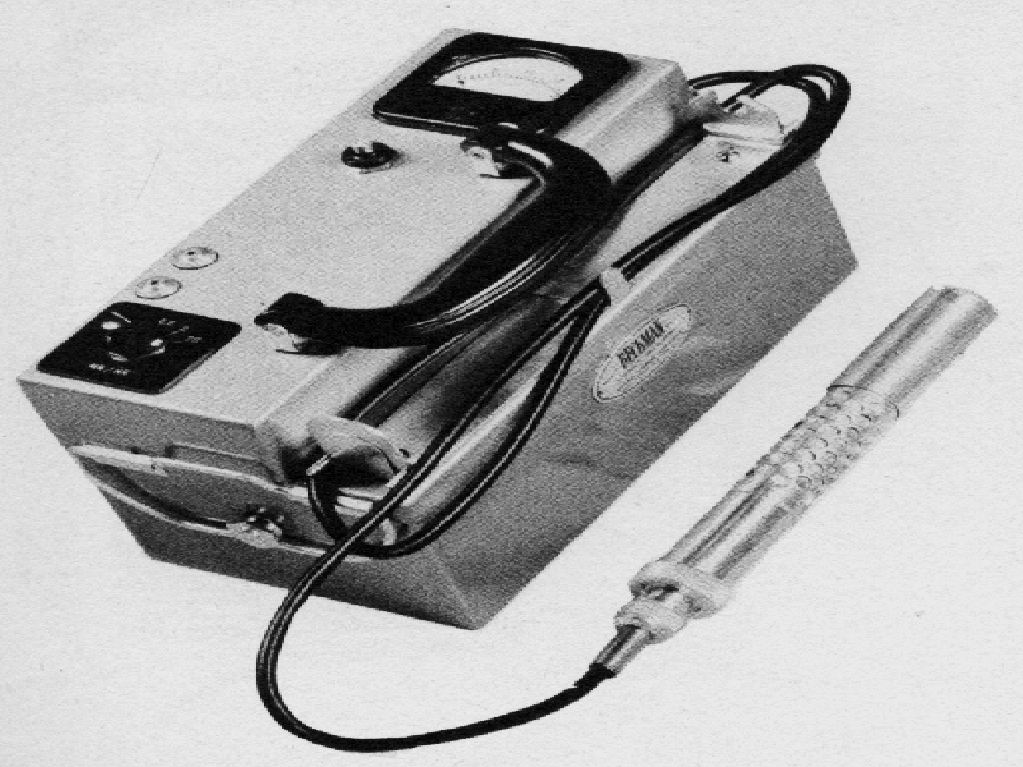
Beckman Model MX-5 1948
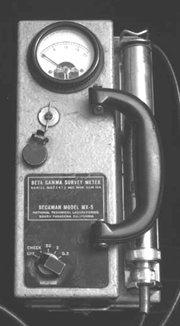
Beckman Model MX-5 1950's
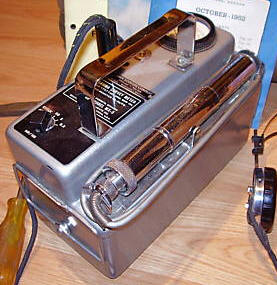
Beckman Model MX-5 1950's
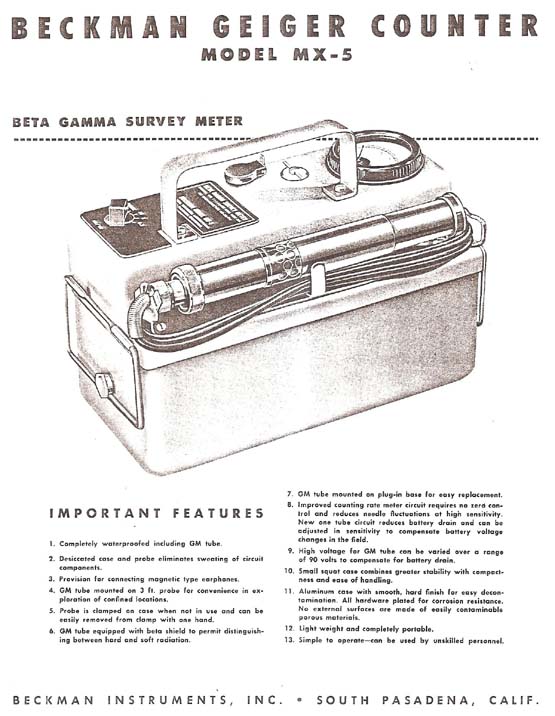
Beckman Model MX-5 1950
The Beckman Model MX-6 Gamma Survey Meter (also sold by Radiation Counter Laboratories as the Beckman Gamma Survey Meter, Mark II, Model 23) was introduced in 1948. The unit has a hermetically sealed ion chamber permitting readings independent of atmospheric pressure. It has a waterproof, desiccated case. The ion chamber is 0.5 liters and filled with three pounds of monochlorodifluoromethane (freon). The fill material allowed for accurate operation at any altitude. Operating range was from 5, 50, 500 and 5,000 mR/h. It has two controls – one for ranging and one for zeroing. It has a welded aluminum case. The unit was 4.75” x 5.5” x 9.5” and weighs 7 lbs. 12 oz. It sold for $350 in 1950 and $290 in 1950.
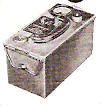
Beckman Model MX-6 1952
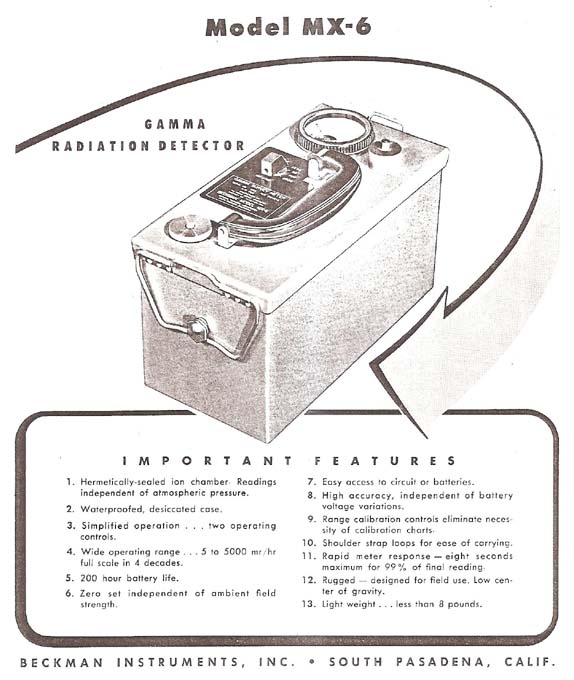
Beckman MX-6 Ad 1950
The Model MX-7A Beckman pocket radiation alarm was offered by the National Technical Laboratories in 1949. It has an accumulative type warning and sounds an alarm when 100 mR is reached. It has an ionization chamber and is designed to be worn on one’s belt. When the 100 mR is reached, the alarm will continue until the switch is turned off.
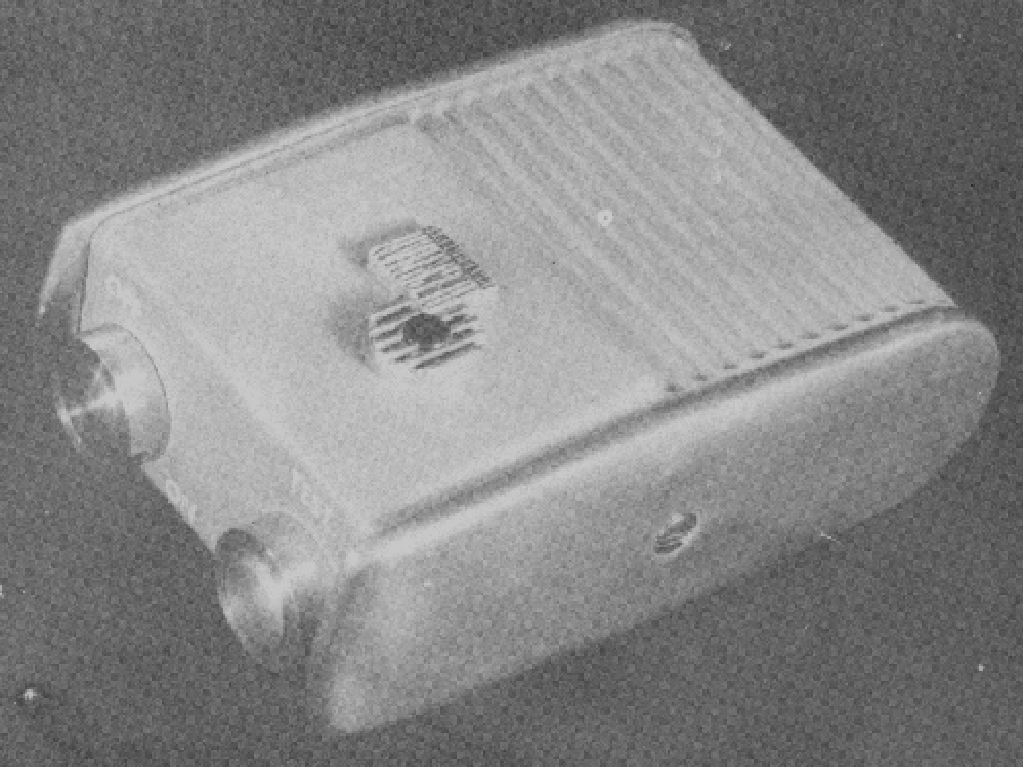
Beckman Pocket Radiation Alarm 1949
The Model MX-7B Radiation Alarm was offered in 1951. It is an accumulator-type warning instrument that sounds an alarm upon measuring a preset quantity of gamma radiation. It is small and can be worn on your belt. The unit weighed less than 1.5 lbs. It sold for $142.50 in 1951.
The Beckman Model MX-8 is a lightweight, revolutionary unit designed especially for uranium prospecting. The unit was inexpensive and simple to operate. It weighs only 3.25 lbs. The GM tube is encased in the instrument for one hand operation. It detects beta, gamma and x-rays. The unit came with headphones. It was ideal for uranium prospecting. It sold for $75 in 1950.

Beckman MX-8 1949
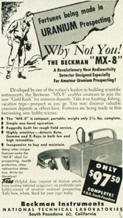
Beckman MX-8 Ad 1949
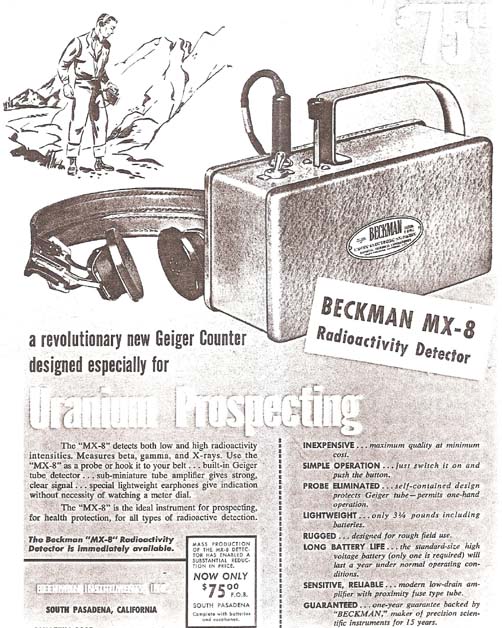
Beckman MX-8 Ad 1950